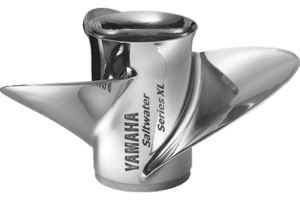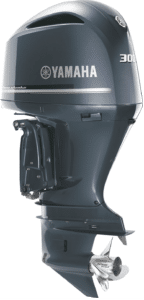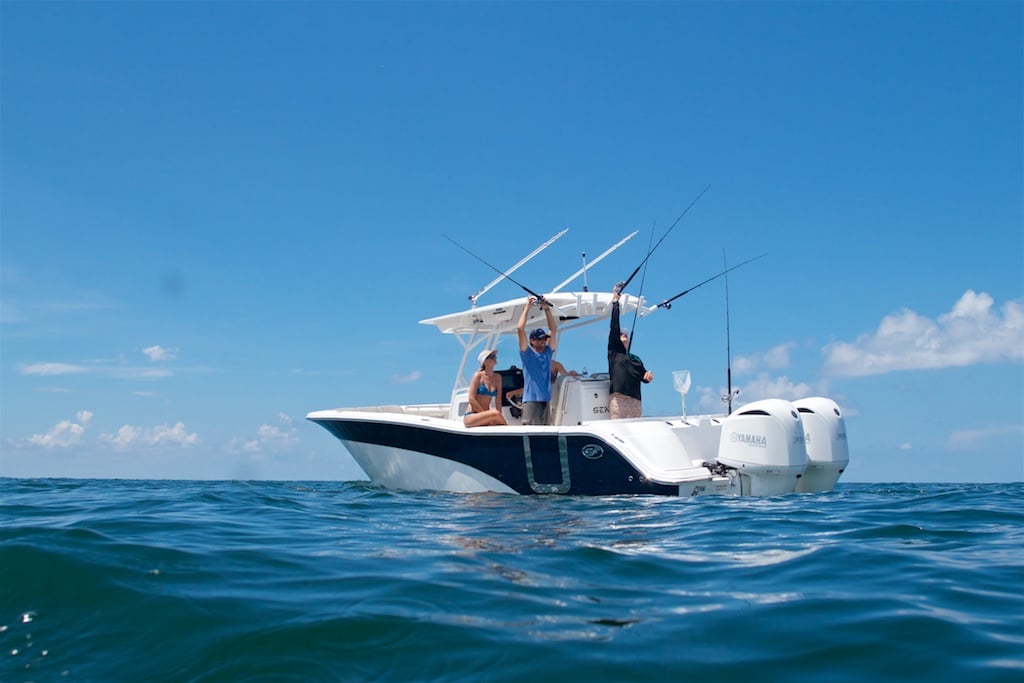When it comes to optimizing the performance of your boat, there are a few things that will provide immediate benefits: cleaning your boat’s hull, keeping your engine tuned up, and choosing the right propeller. Choosing the right propeller will allow your engine to operate in the recommended RPM range, but prevent the engine from over-revving. This is where maximum horsepower is produced, with ideal engine loading. A correctly sized prop will also help increase the fuel efficiency of your boat.
What is the proper propeller size for my boat?
 How do I know what to look for? The optimal propeller size for your boat and engine combination is based in part of the WOT (wide open throttle) operating range for your particular engine, and your expected use case. You can find the WOT in your operator’s manual, expressed in terms of certain horsepower at a specific RPM.
How do I know what to look for? The optimal propeller size for your boat and engine combination is based in part of the WOT (wide open throttle) operating range for your particular engine, and your expected use case. You can find the WOT in your operator’s manual, expressed in terms of certain horsepower at a specific RPM.
The owner’s manual will detail what diameter and pitch should be of the propeller, but to determine the exact prop that you should choose for your boat, you should take into consideration several factors.
What problems are you looking to solve?
If you are purchasing a replacement propeller, chances are you have a specific issue that you are trying to address. Is your boat sluggish coming out of the hole and slow to get on a plane? Do you think your boat is not hitting its top speed? Are you looking for better all-around performance or better fuel economy? Once you know what you are trying to achieve, you can move on in the selection process as you will have a better understanding of what to look for.
Over or under revving, and proper pitch
As we stated previously, the correct prop should result in your engine running within the designed range detailed at the WOT. This spec can range, but it is usually 5000-5500 RPM for an outboard and 4200-5000 RPM for a sterndrive. If you are unaware, can’t find the information in your owner’s manual, or just want further advice, your mechanic or dealer can help you out.
Both over and under revving can result in engine damage but can be corrected by selecting a prop with a different pitch.
Award-Winning Customer Service
The Sheltered Cove Marina team is waiting to help you choose the correct prop for your boat! Give us a call today and let our factory-trained technicians install your prop for you.
(609) 296-9400
Pitch up or pitch down?
 There is a direct correlation between engine RPM and pitch: increasing your prop pitch with decrease engine RPMs and decreasing the pitch with increase engine RPMs. The general rule of thumb is a two-inch increase in pitch with results in a reduction of 300-400 RPM, and a two-inch decrease will increase 300-400 RPMs. Depending on how your engine has been performing will help you to decide which way you should go.
There is a direct correlation between engine RPM and pitch: increasing your prop pitch with decrease engine RPMs and decreasing the pitch with increase engine RPMs. The general rule of thumb is a two-inch increase in pitch with results in a reduction of 300-400 RPM, and a two-inch decrease will increase 300-400 RPMs. Depending on how your engine has been performing will help you to decide which way you should go.
Number of blades
You might think that the more blades your prop has, the better performance you will get. However, as more blades are added to a propeller hub, the drag is increased. The most efficient prop would have just one blade, but you would experience vibration that absolutely could not be controlled. More blades may increase drag, but it also increased the ability to grab more water, meaning the ride will feel smoother. Adding and removing blades is one easy way to increase/decrease the performance of a boat. Propellers typically come with 2 to 6 blades.
Some problems that may arise
There are two problems that you want to keep an eye out for when it comes to using your new propeller: ventilation and cavitation.
Ventilation
This is a situation where surface air or exhaust gases are drawn into the propeller blades. This causes boat speed to reduce and engine RPMs to climb rapidly. There can be several causes for this: excessively tight cornering, over-trimming the engine, or a motor that is mounted very high on the transom. This can also be caused by prop designs that are not matched to the application, props with little to no cup, or props that have worn/damaged edges.
Cavitation
When small air bubbles form against a propeller blade, it is called cavitation. This happens because the water boils around the prop. Many props partially cavitate during normal operation, but excessive cavitation may result in pitting of the propeller blade surface, known as “cavitation burn.” Just like ventilation, there are several causes of cavitation as well: incorrect matching of prop style to application, incorrect pitch, physical damage to the blade edges, or water flow obstruction such as parts of the boat’s hull or running gear too close to the propeller.
Selecting your prop
We stock, install, and service propellers to fit many outboards and sterndrives. To make the best selection possible, you should make sure to gather as much information as possible. Here is a list of items that you should know when choosing your new prop.
Propeller Data
- Present prop diameter
- Present prop pitch
- Right- or left-hand prop rotation (clockwise is right hand)
- Number of blades
- Material (Usually aluminum or stainless steel)
Other useful information
- Manufacturer’s part number
- Shaft diameter and number of splines or keyway type
Engine Data
- Number of engines
- Rated horsepower
- Gearcase size
- RPM at WOT
- Manufacturer, model and year
Other very useful information
- Displacement in cubic inches or centimeters
- Power trim or trim tabs
Boat Data
- Length overall
- Hull material
Other very useful information
- Manufacturer, model and year
- Hull shape
- Present/desired top speed
With so many options, types, and features, purchasing the correct boat prop can be an overwhelming task. Our award-winning staff can help you choose the correct prop based on your needs and specification, and our factory-trained and certified technicians can install it for you. Many times by having us check and verify your boat is correctly propped can save you long term costs, improve efficiency, reduce fuel costs, and provide a much better driving boat. As the #1 full-service marina in New Jersey, we offer a wide range of services and product offerings, while providing amazing customer service. Our phones are always on: give us a call or text us at (609) 296-9400 and our team will help you make the correct decision.

